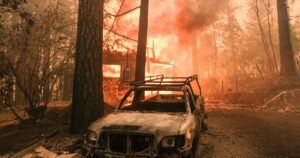How insurers must adapt to new standards in strategy, culture

In a rapidly changing world, the strongest predictor of success is the ability to respond to change. The COVID-19 pandemic has impacted every industry across the globe, and insurance is no exception.
85% of insurance CEOs believe that COVID-19 has accelerated the digitization of their operations and expedited the creation of a more seamless digital customer experience – certainly a positive consequence of an otherwise challenging era. According to PWC, the shift driven by customers’ demand for more personalized products, pricing and experiences will be a core differentiator.
As the world begins to recuperate in the wake of the pandemic, new standards of work, strategy and culture have emerged, reshaping the future and introducing us to a new dimension, where nimbleness is a standard of this new normal.
In order to not only survive but thrive, insurers must be prepared to acclimate and adapt to the multitude of factors that continue to shape the business world, while maintaining the dexterity necessary to respond to change and strengthen the strategies that enable them to do so.
Expectations for future operations
We can expect all major operational processes to become substantially more efficient in time. Enabled by advanced technology, automation and digitization, insurers will discover and leverage new opportunities.
Digitization and data continue to be at the forefront of our expectations for the future, and while organizations have begun to unlock the potential, it’s a never-ending pursuit. The ability to leverage new information – about potential markets, risks, customers, competitors, natural disasters and more – and digitally transform collected data into valuable business insights will help carriers further evolve.
For example, Robotic Process Automation (RPA) and advanced automation software are taking over back-office processes for underwriting, claims, financing and more, while chatbots powered by Natural Language Processing (NLP) and Machine Learning (ML) are expected to handle basic user inquiries, improving back-office tasks even further. In fact, experts anticipate that by 2025, 95% of all customer interactions will be powered by chatbots. As customer and employee experience becomes an even more prevalent driver across all industries, insurers will need to pioneer new approaches not only to meet customer demand but to exceed expectations through every stage of the journey.IoT sourced insights and advanced surveillance (drones and satellites) will continue to improve, allowing P&C carriers to anticipate and diversify risks, while Life carriers will have new advantages driven by wearables. This further cements the need to invest in capabilities to enable proactive preparation and real-time response mechanisms.
Adopting innovative technology will drive elevated experiences, produce more efficient operations and further help assuage the talent crisis.
Future workforce
Companies are reimagining how they allocate roles and resources, with strategic planning and streamlined operating models to better acclimate to a future where distributed and remote work is strengthened by technology. This new era has already seen a renewed focus on integral initiatives such as social responsibility, sustainability and transitions to net-zero, all of which have become critical drivers for younger talent demographics.
Moving forward, the insurance workforce will be more focused on strategic functions, albeit in a more flexible model to better accommodate hybrid work models and distributed talent pools. The integration of automation enabled by technologies (including robotics and AI) promises higher productivity, as well as economic growth, increased efficiencies, safety and convenience.
The tools that we use to work remotely will become the tools that help measure and improve performance. Basic administrative and transactional back-office processes will be streamlined by the implementation of automation and AI/ML technologies.
Experience will no longer solely be about the customer or consumer, but also expand to envelope employees. The continued focus on diversity, equity and inclusion will remain a critical pillar of company culture. The same is true for new programs that focus on mental, physical and financial health and supporting more conducive work/life balances to support employee well-being.
As the Great Resignation begins to ebb (according to recently released data from the U.S Bureau of Labor Statistics), insurers can expect to see regained interest in what was perceived as an industry of ‘stability.’ However, the need for talent will continue. A positive company culture will remain a key differentiator, as will next-gen technologies and flexible work conditions and responsibilities.
Strategic choices
Senior insurance leaders must be empowered with the best tools, technology and talent to make informed, strategic choices.
Analytics will play a major role in both automating and augmenting key strategic decision-making. Strategic analytics can help identify and understand customers, define new services by creating real-time feedback loops with customer needs, and improve both the claims experience for customers and claims results for insurers.
Even for those who are fast followers of trends, the pace at which the insurance industry is evolving continues to accelerate – making being a proactive and purpose-driven leader a vital quality. By taking early actions, creating structural flexibility throughout the value chain can become second nature for insurers.
It is important to instill an innovative mindset across the enterprise. Flexibility will come from the ability to test and try different strategic choices, whether they should succeed or fail. The experimental experience will offer insight into what will work better next time and produce better results in the long run.
Our ever-changing new normal will continue to be a catalyst for innovation, transformation and acclimation, not only for insurers but across all industries.
By identifying and assessing tools, technology and talent that will better help businesses navigate the journey forward, insurers can improve decision making, enable problem-solving and leverage the disruptive value of next-gen technologies.
Reimaging and reinventing new future-forward and malleable strategies will be key for insurers who are looking to power their possibilities, exceed customer and employee expectations and drive profitable growth in an ever-changing world.
Being able to anticipate and evolve with the changing times will enable insurers to respond to uncertainty. So now, it is in the hands of insurers to drive transformation instead of waiting for it to come to them.






